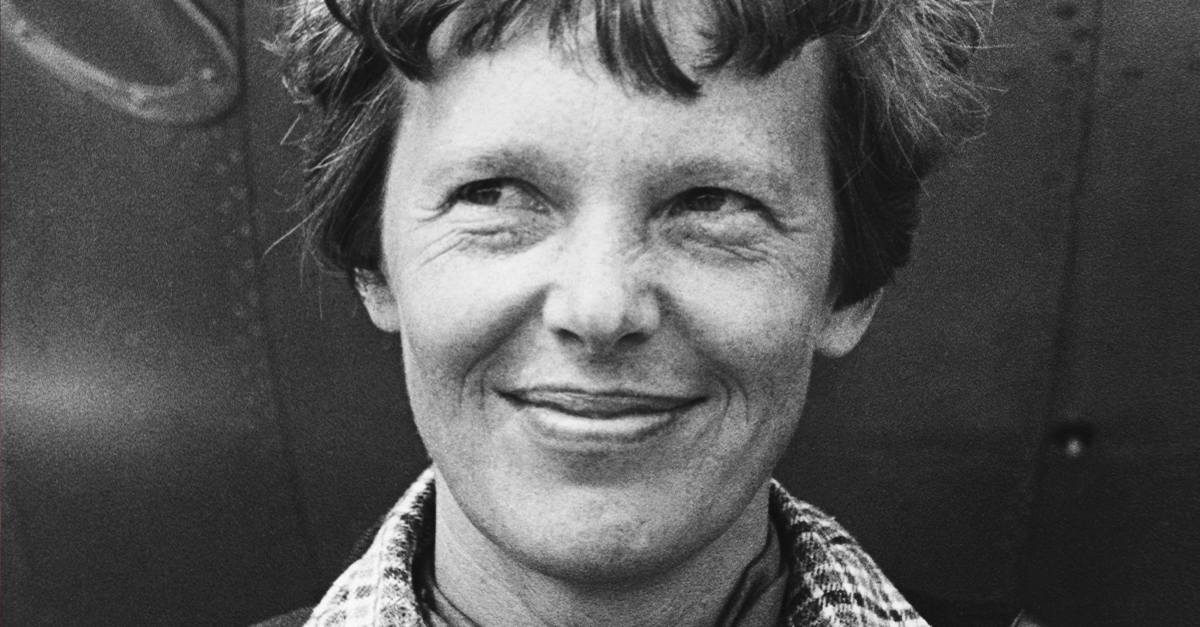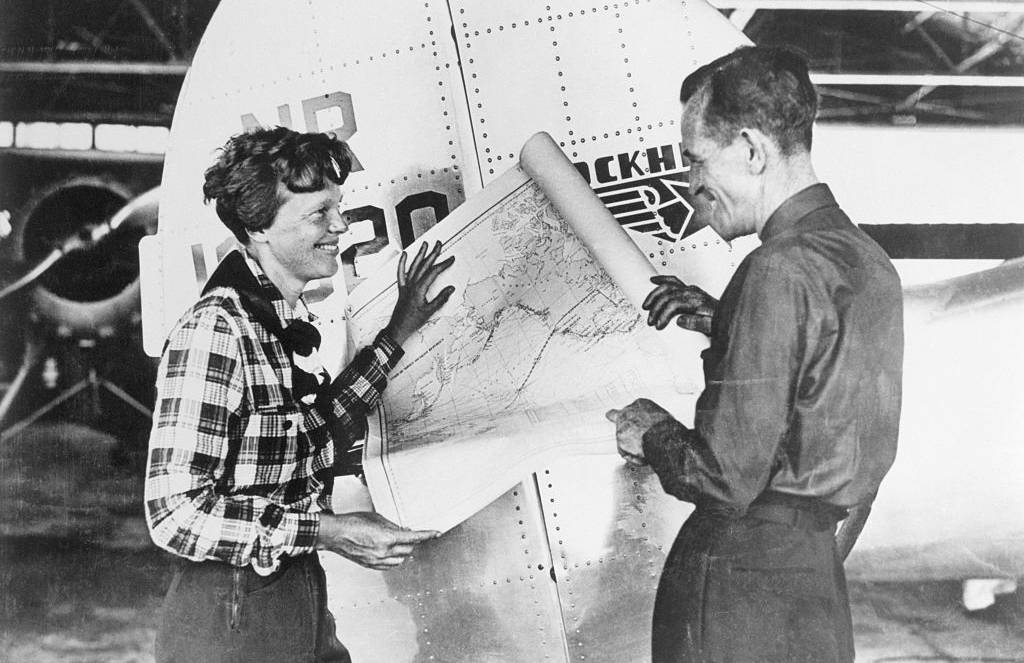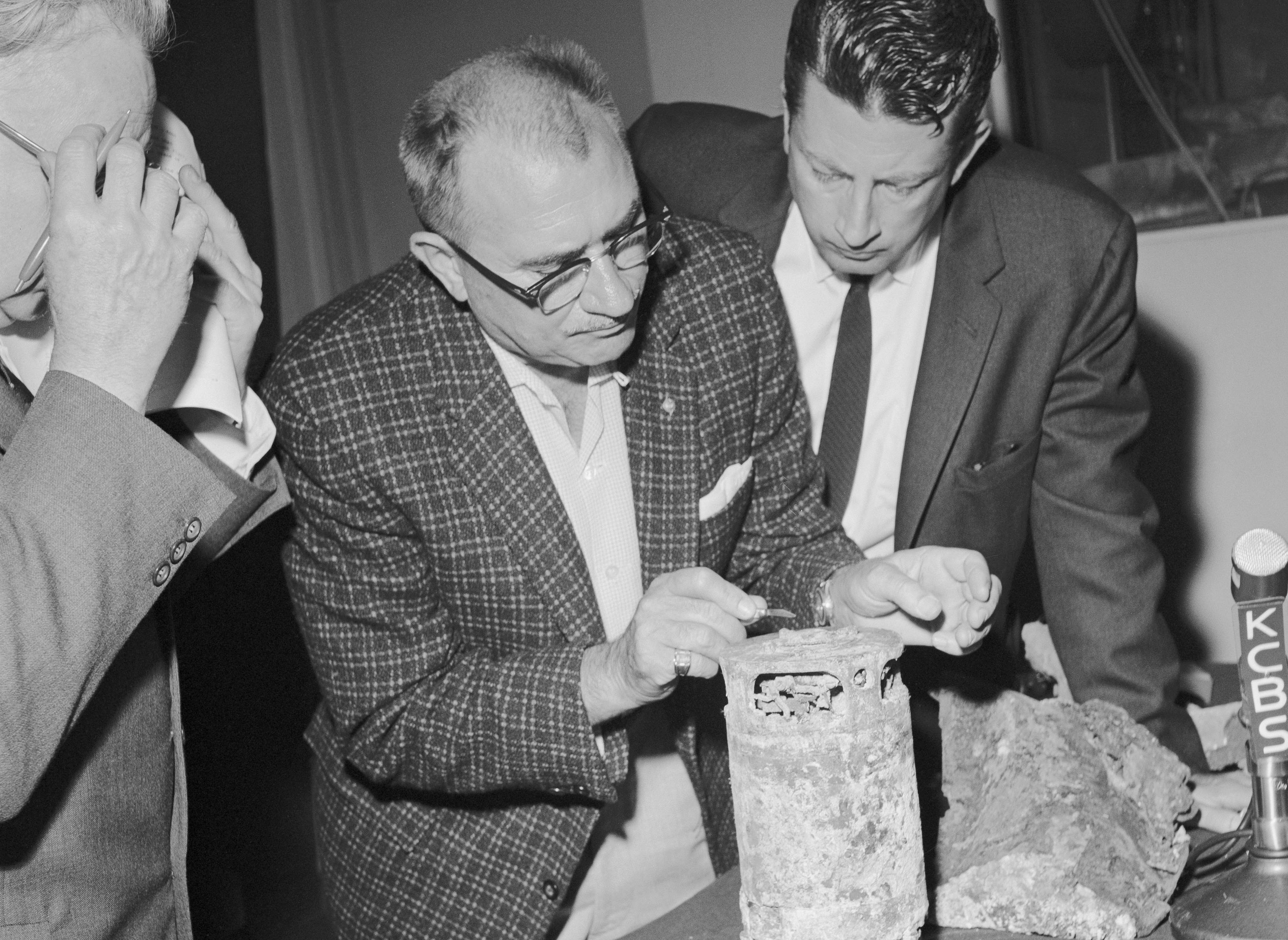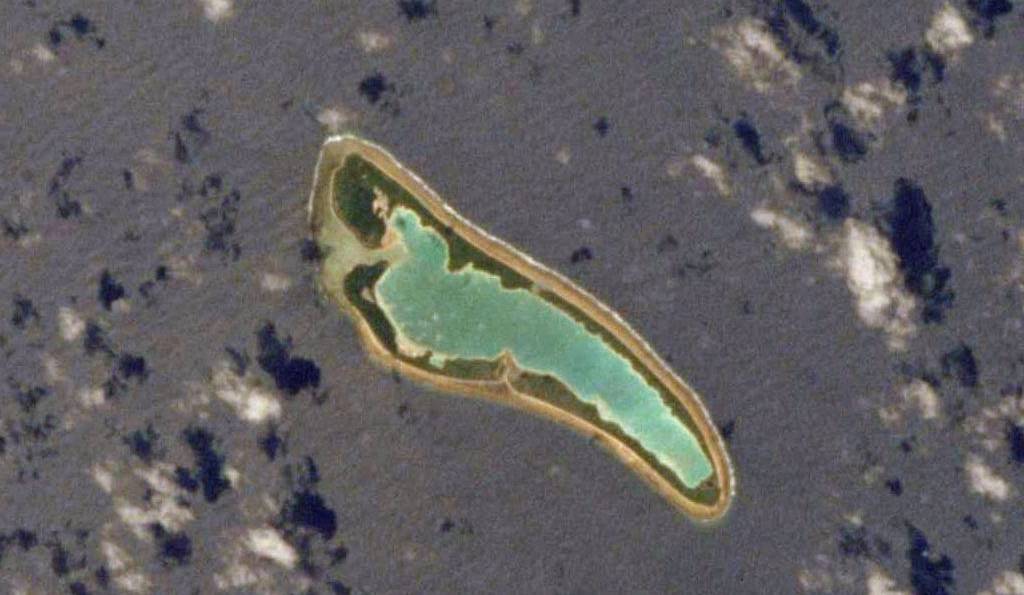History's Prevailing Mystery
If there's one woman from history whose story still has the power to captivate people, it's Amelia Earhart. She made leaps and bounds in the world of aviation, setting many records and becoming the first woman to fly across the Atlantic Ocean by herself. However, her shocking disappearance in 1937 ignited one of the greatest mysteries of all time.
What happened to Amelia Earhart? And after 87 years of constant theorizing, has her plane finally been found?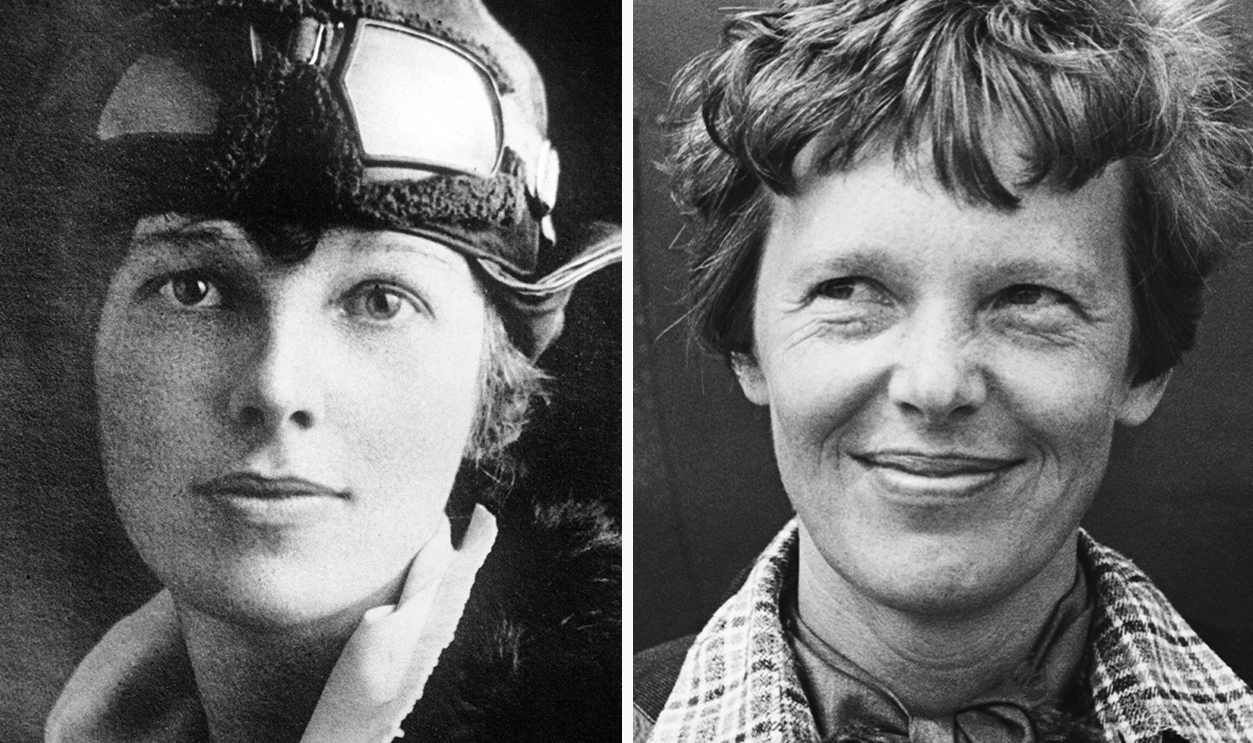
She Was Destined For Greatness
Born in 1897, Amelia Earhart's early years couldn't have possibly foretold her shocking future—but there was undoubtedly something special about her.
 Everett Collection, Shutterstock
Everett Collection, Shutterstock
She Turned Her Back On Traditional Gender Roles
Earhart was an adventurous leader among her siblings and consistently rejected traditional gender roles. For instance, she loved playing basketball, became interested in how to fix cars, and even went to college for a short time. But it wasn't long before she discovered her true passion.
 Amelia Earhart, Wikimedia Commons
Amelia Earhart, Wikimedia Commons
Flying Caught Her Eye
When WWI began, Earhart made her own contributions to the cause. In Toronto, Canada, she became a Red Cross nurse's aide. However, it was also during this time that she began observing the goings-on at the local airfield—the men being trained as pilots for the Royal Flying Corps. But this was only the beginning.
 Everett Collection, Shutterstock
Everett Collection, Shutterstock
She Almost Had A Different Life
When the war came to an end, Amelia pursued her education in medicine at Columbia University—but eventually dropped out. Little did she know, her life was about to change forever.
She Sealed Her Dark Fate
In 1920, Amelia Earhart took the first step toward her incredible career in aviation. She rode in an airplane for the first time with Franks Hawks, a WWI pilot. It was an experience that stole her heart—but also sealed her tragic fate.
She Purchased Her First Plane
Only a month later, Earhart began taking flying lessons—and before the year was up, she'd already purchased a yellow airplane that she called "the Canary". Her future spread out before her, brimming with possibility—but in truth, the clock had already begun ticking. She had 16 years left.
She Broke Records
By 1936, Amelia Earhart had a number of accolades under her belt. She'd gone on many solo flights and participated in flying competitions, not to mention her record-making flight across the Atlantic. But that was just the tip of the iceberg.
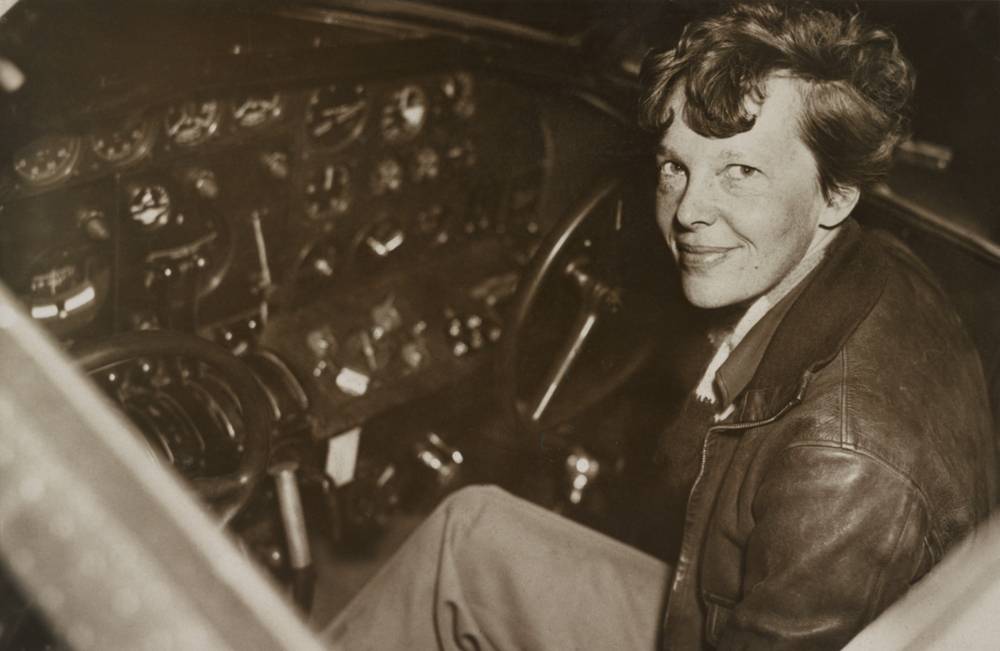 Everett Collection, Shutterstock
Everett Collection, Shutterstock
She Became A Celebrity
Amelia Earhart became a celebrity and a household name—and the media began calling her "Queen of the Air" and "Lady Lindy" (after Charles Lindbergh). She embarked on lecture tours and even wrote a book, cementing her legacy as a feminist icon—one that continues to inspire female pilots to pursue careers in aviation.
However, there was one goal she hadn't yet completed.
 Amelia Earhart, Wikimedia Commons
Amelia Earhart, Wikimedia Commons
She Wanted To Fly Around The World
Earhart had already achieved so much, but she wanted to go a step further—and in 1936, she began planning her most daunting expedition yet. She hoped to fly around the world.
 Harris & Ewing, Wikimedia Commons
Harris & Ewing, Wikimedia Commons
It Would Be The Longest Route
Earhart's route was also different from other pilots who'd flown around the world. Her route would be closer to the equator, which made her distance the longest—29,000 miles. This was a special mission... and she needed a special plane to match it.
 Luciaroblego, CC BY-SA 4.0, Wikipedia Commons
Luciaroblego, CC BY-SA 4.0, Wikipedia Commons
She Needed A Special Plane
In the summer of 1937, Earhart feasted her eyes on the plane of her dreams—a Lockheed Electra 10E airplane—which she called her "flying laboratory". This aircraft was supposed to safely carry her through her long journey. But as we know, things didn't go exactly as planned.
 Wide World Photos, Wikimedia Commons
Wide World Photos, Wikimedia Commons
Her First Flight Attempt Was A Chilling Omen
The Lockheed Electra 10E was a twin-engine monoplane, and had been constructed with some special modifications, such as extra fuel tanks. Earhart first attempted the flight on March 17, 1937—but sadly, something ominous happened.
The Plane Didn't Get Off The Ground
The expedition had only just begun when one of her takeoffs went mysteriously wrong. In Honolulu, the plane crashed before it could even get in the air; its forward landing gear caved in and the propellers smashed into the earth, with the body of the plane sliding along the ground.
 JRdxbcmc, CC BY-SA 4.0, Wikimedia Commons
JRdxbcmc, CC BY-SA 4.0, Wikimedia Commons
She Didn't Give Up
Though the cause of this disaster was never pinned down, some witnesses claimed to have seen one of the tires blow out. With a damaged plane on her hands, the disappointment must have been palpable—but Earhart wasn't about to throw in the towel.
 The U.S. National Archives, Picryl
The U.S. National Archives, Picryl
She Raised Money
Though her plan had been foiled, Earhart wanted to try again. While she waited for her plane to be fixed, she rounded up the funds she needed to give the mission a second shot.
 Harris & Ewing, Wikimedia Commons
Harris & Ewing, Wikimedia Commons
She Set Off On A Doomed Expedition
The second time around, Earhart switched up her original route—flying in the opposite direction from west to east. On June 1, 1937, she and her navigator Fred Noonan took off from Miami. And, at first, everything went smoothly.
 SDASM Archives, Wikimedia Commons
SDASM Archives, Wikimedia Commons
They Almost Made It
For the next four weeks, Earhart and Noonan flew 22,000 miles. They hit stops in South America, India, Africa, and Southeast Asia. They completed the majority of the trip around the world. Success was right at their fingertips.
Then, on June 29, they landed in Lae, New Guinea.
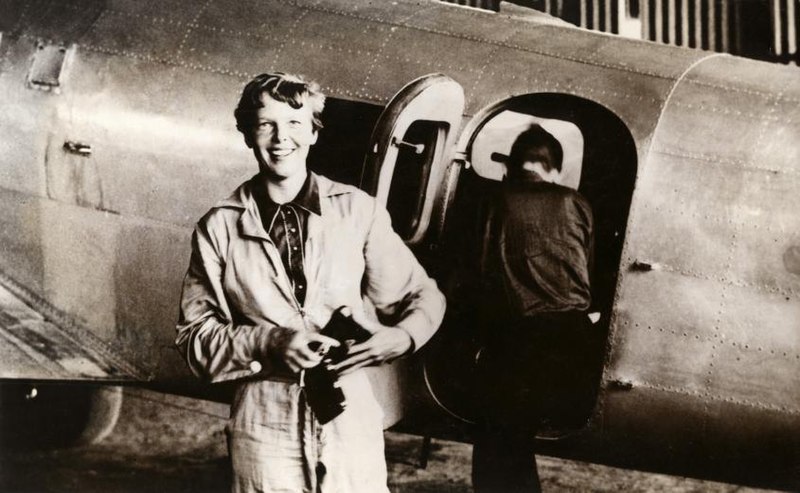 Nationaal Archief, Wikimedia Commons
Nationaal Archief, Wikimedia Commons
One Final Stretch
Earhart and Noonan's stop in Lae, New Guinea marked a chilling turning point in this expedition, though neither of them knew it yet. They only had 7,000 miles left to fly, and would be crossing the Pacific Ocean, headed for Howland Island.
The End Was In Sight
On July 2, they began the final leg of their journey with 1,100 gallons of gasoline. They expected to be in the air for around 20 hours and planned to touch down on Howland Island by the next morning—but instead, everything went wrong.
 National Museum of Science and Technology, Wikipedia Commons
National Museum of Science and Technology, Wikipedia Commons
They Weren't As Prepared As They Thought
Because this was destined to be such an arduous and risky journey, there were a number of US ships prepared with aid for Earhart. This included the Coast Guard cutter Itasca. It seemed like they were prepared for anything—but nothing could have been further from the truth.
 U.S. Coast Guard, Wikimedia Commons
U.S. Coast Guard, Wikimedia Commons
They Ran Low On Fuel
As Earhart and Noonan drew closer to Howland Island, disaster struck. Earhart radioed the Itasca for help: They had a low amount of fuel and needed a bearing for the plane. That's when Itasca's radio operators made a chilling discovery.
 Unknown Author, Wikimedia Commons
Unknown Author, Wikimedia Commons
They Were Helpless
The Itasca's RDF system couldn't tune into the signal of Earhart's plane. One of the radiomen, Leo Bellarts, later described this horrifying realization: "[I] was sitting there sweating blood because I couldn't do a darn thing about it".
 L.A.B. Pearl Harbor, Wikimedia Commons
L.A.B. Pearl Harbor, Wikimedia Commons
They Couldn't Locate Them
Not only was the Itasca's crew unable to locate Earhart, but they also couldn't help her with navigation. Running out of time, Earhart tried in vain to find the ship and made a heartbreaking report over the radio: "One-half hour fuel and no landfall".
She Lost Contact
Though Earhart had tried to relay her position, no help could reach her. Then the Itasca lost all contact. One can only imagine the nightmare Earhart likely faced if she had attempted to land her aircraft on the water.
 L.A.B. Pearl Harbor, Wikimedia Commons
L.A.B. Pearl Harbor, Wikimedia Commons
A Slim Chance Of Survival
If, by chance, Earhart had tried to land on the water, and executed it perfectly, then she and Noonan might have survived. However, only a perfect landing would have given them enough time to collect what they needed and deploy the life raft.
 San Diego Air & Space Museum Archives, Wikimedia Commons
San Diego Air & Space Museum Archives, Wikimedia Commons
A Futile Search
In the wake of this horror show, the Coast Guard and the US Navy jumped into action and did a thorough search of the area—but no matter how hard they looked, they found no trace of Earhart, Noonan, or the Lockheed Electra.
Conspiracy Theories
Though it's generally assumed that Earhart perished after crashing into the Pacific Ocean, her disappearance sparked a number of conspiracy theories.
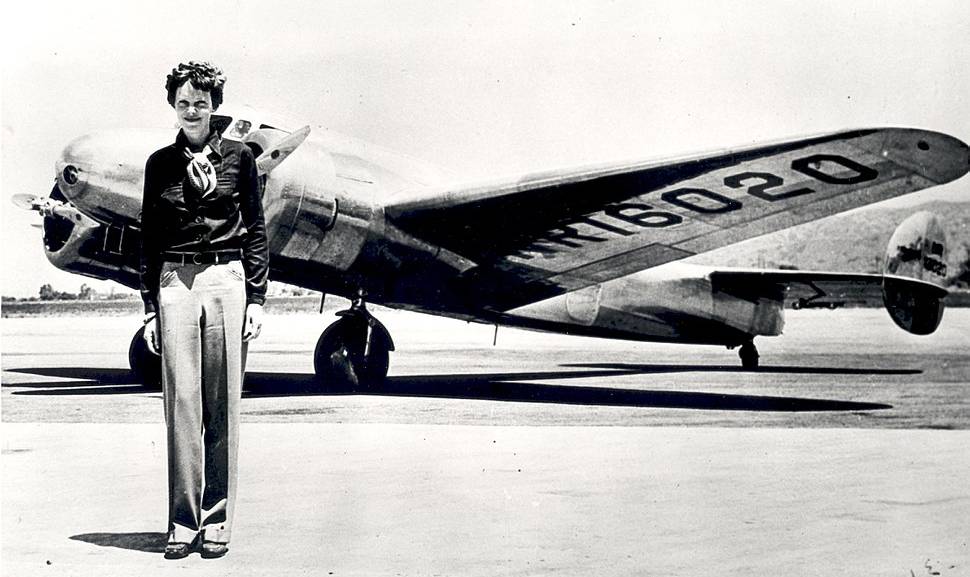 Smithsonian Institution, Wikimedia Commons
Smithsonian Institution, Wikimedia Commons
The Nikumaroro Theory
The Nikumaroro theory suggests that when Earhart failed to locate Howland Island, she continued to fly south. One of the Phoenix Islands was Gardner Island (now Nikumaroro)—and some believe this might be where Earhart eventually crashed.
 Angela K. Kepler, Wikimedia Commons
Angela K. Kepler, Wikimedia Commons
The Nikumaroro Theory
Though there have been expeditions hoping to confirm whether the Nikumaroro theory is correct, no evidence to support it has been discovered.
 Everett Collection, Shutterstock
Everett Collection, Shutterstock
The Japanese Capture Theory
There is also another theory that suggests Earhart and Noonan wound up in the Japanese South Seas Mandate where they crashed their plane on the island of Saipan. Here, Japanese forces apprehended them. Shockingly enough, several of Earhart's family members believed this hypothesis.
The Japanese Capture Theory
Though there is no real evidence to suggest that the Japanese capture theory is true, there have been some alleged witnesses. For instance, one Saipanese woman claimed that she saw Japanese officers execute both Earhart and Noonan.
The New Britain Theory
Then there's the New Britain Theory. Some people believe that Earhart turned her plane around and headed for the airfield in Rabaul, New Britain. In 1990, a veteran came forward with a convincing claim.
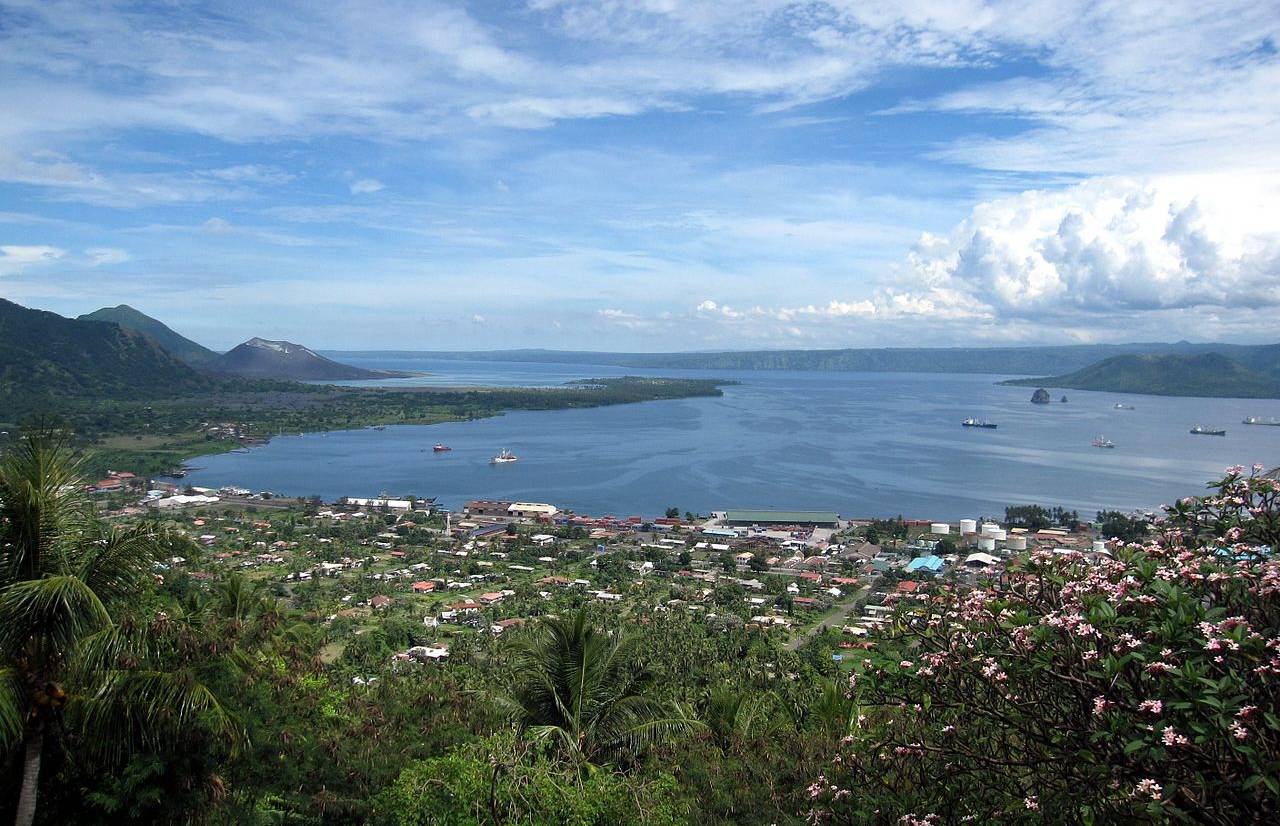 Stefan Krasowski, CC BY 2.0, Wikimedia Commons
Stefan Krasowski, CC BY 2.0, Wikimedia Commons
The New Britain Theory
The veteran Donald Angwin claimed that back in 1945, he'd stumbled across a wrecked plane in the jungle southwest of Rabaul. This could have been Earhart's plane, but searches failed to locate this supposed crash site. Of course, this wasn't even the craziest theory.
The New Identity Theory
Perhaps the wildest and most controversial theory to come out of Amelia Earhart's disappearance was the one posited in the 1970 book Amelia Earhart Lives. Its claims led to a shocking lawsuit.
 Amelia Earhart, Wikimedia Commons
Amelia Earhart, Wikimedia Commons
The New Identity Theory
Written by Joe Klaas and based on the research of Joseph Gervais, Amelia Earhart Lives suggested that Earhart had survived and taken on a new identity, changing her name to Irene Craigmile Bolam. Not long after the book hit the shelves, Bolam took action.
The New Identity Theory
Irene Craigmile Bolam did not take kindly to the claim that she was actually Amelia Earhart, and sued for $1.5 million. She ended up settling out of court with the book's publisher.
A New Theory
It's pretty wild to think that the fascination surrounding Amelia Earhart persists even today—and as recently as 2024, a brand new theory has emerged.
A Bold Claim
In 2024, a research team came forward with some jaw-dropping news. They announced on social media that they may have found Amelia Earhart's Lockheed 10-E Electra—a discovery 87 years in the making. But how did they do it?
Sonar Imaging Came Across Something Strange
According to these researchers, sonar imaging seemingly revealed a small aircraft on the floor of the Pacific Ocean—16,000 feet deep.
The ocean exploration company responsible for this stunning announcement was Deep Sea Vision.
Deep Sea Vision Posts On Instagram
On January 27, they made an Instagram post with a mind-blowing caption: "Deep Sea Vision scanned more than 5,200 square miles of ocean floor with a 16-person crew and the Kongsberg Discovery HUGIN 6000, the most advanced unmanned underwater drone, before finding what could be the legendary American aviator's Lockheed 10-E Electra".
However, other experts aren't yet sold on this theory.
 Wirestock Creators, Shutterstock
Wirestock Creators, Shutterstock
Experts Have Their Guards Up
Dorothy Cochrane works as a curator for the Aeronautics Department at the Smithsonian National Air and Space Museum—and her theory lines up with the widely-held belief that Amelia Earhart crashed her plane into the ocean after running out of fuel.
However, she has her doubts about Deep Sea Vision's findings.
She Needs More Evidence
For Cochrane, a sonar image just isn't enough evidence: "Photographing the object would greatly assist in identifying it further. I am encouraged that DSV is searching near Howland Island and believe they would like to make another expedition to conduct more research".
But she's not the only expert to feel this way.
 Amelia Earhart, Wikimedia Commons
Amelia Earhart, Wikimedia Commons
Some Hold Onto Old Theories
Richard Jantz is a professor at the University of Tennessee who believes that Amelia Earhart died on Nikumaroro—a theory mentioned previously. He has been quoted saying, "In order for the Nikumaroro hypothesis to be disproven that aeroplane would have to be positively identified as Earhart’s Electra. That has not yet happened, and until it does there is no point in speculating about an Earhart connection".
He Has His Reasons
Jantz's strong stance has much to do with his examination of the measurements of bones that might have belonged to Amelia Earhart. If these particular bones were Amelia Earhart's, it would prove that she perished on Nikumaroro. Additionally, he isn't the only expert to feel so strongly about this particular conspiracy theory.
 Los Angeles Daily News, CC BY 4.0, Wikimedia Commons
Los Angeles Daily News, CC BY 4.0, Wikimedia Commons
Desperate To Find Her
Another man who upholds the Nikumaroro theory is Richard Gillespie—the founder of The International Group for Historic Aircraft Recovery. He has gone on a whopping 12 expeditions, hoping to finally discover Earhart's lost Lockheed.
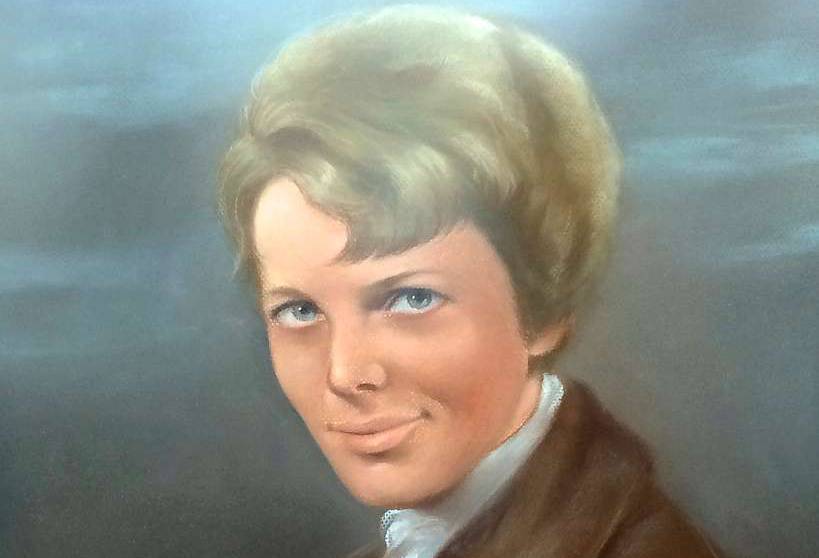 National Parks Gallery, Picryl
National Parks Gallery, Picryl
He Doesn't Trust The Photograph
He also doesn't believe that these new findings made by Deep Sea Vision are true. Gillespie shared, "It is definitely not the Lockheed Electra and it's not just me that thinks so. Any sonar expert will tell you that one grainy image doesn't tell you anything".
Instead, Gillespie hypothesizes that the sonar actually found a US Navy fighter jet—not the Lockheed Electra.
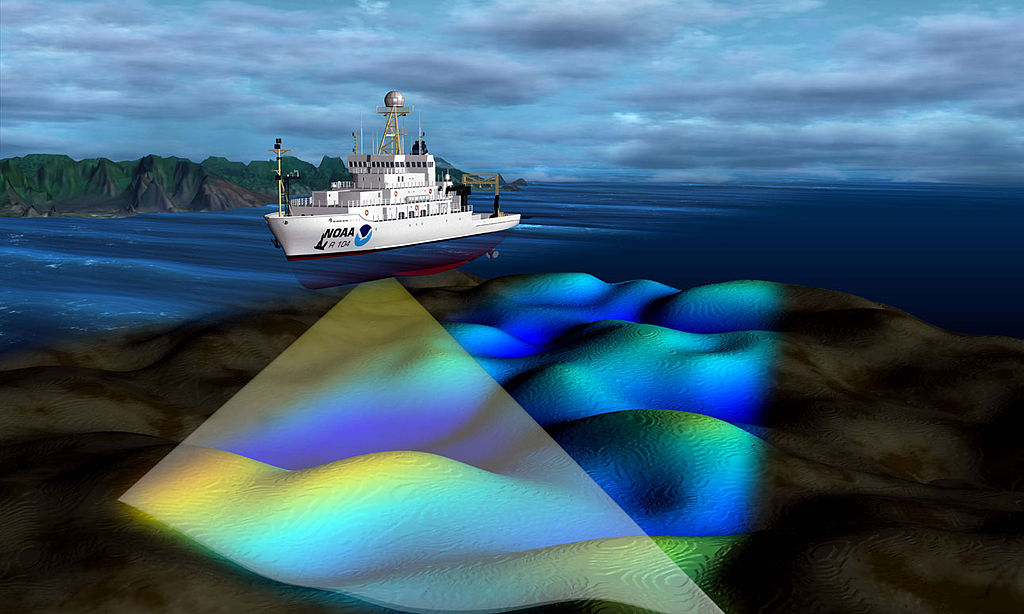 NOAA's National Ocean Service, Wikimedia Commons
NOAA's National Ocean Service, Wikimedia Commons
Deep Sea Vision Has High Hopes
Still, Deep Sea Vision's findings have roused excitement from many hopefuls—so much so that the company's founder even made a presentation at the Amelia Earhart Hangar Museum in July 2024.
They had some exciting news to share.
A Second Mission
According to Deep Sea Vision's founders, there will be another expedition to explore the supposed crash site. This will take place near the end of 2024 or in 2025.
 Harris & Ewing, Wikimedia Commons
Harris & Ewing, Wikimedia Commons
Real Answers
This planned second mission is especially exciting because there will also be an optical camera in use. This will be able to give everyone more concrete answers by serving up visual confirmation. But that's not all that's happening.
A Documentary In The Making
Deep Sea Vision seems to be going all in on this discovery—and is planning to release a documentary that follows the mission. One potential title? "Why Not Us".
 SearchlightPictures, Amelia (2009)
SearchlightPictures, Amelia (2009)
Bringing The Plane To The Surface
If, by chance, this truly is Amelia Earhart's legendary plane, the company already has a plan to raise it out of the depths of the ocean and preserve it.
Her Legacy Lives On
Amelia Earhart only lived 39 years, and yet she accomplished so much and paved the way for other women in the field of aviation. This definitely became apparent during WWII, when over 1,000 female pilots joined the Women Airforce Service Pilots, or WASP.
 U.S. Air Force photo, Wikimedia Commons
U.S. Air Force photo, Wikimedia Commons
There's Still Hope
Though Earhart's tragic end has made her the subject of fascination and speculation for decades, the talented aviator had already secured her shining legacy during her lifetime.
Today, there seems to be a neverending list of articles and books about her and her extraordinary contributions. And based on these exciting new discoveries, maybe—just maybe—her heartbreaking mystery will one day be solved.

